Imperial Wonders of Saint Petersburg
Embark on a captivating free walking tour through the majestic heart of Saint Petersburg, exploring its imperial history and stunning landmarks.
Time
3 Hours
Stops
9 Places
Distance
6.6 km
Palace Square
Begin your tour at Palace Square, the heart of Saint Petersburg, which is surrounded by the Winter Palace and the General Staff Building, and offers a stunning introduction to the city's imperial past.
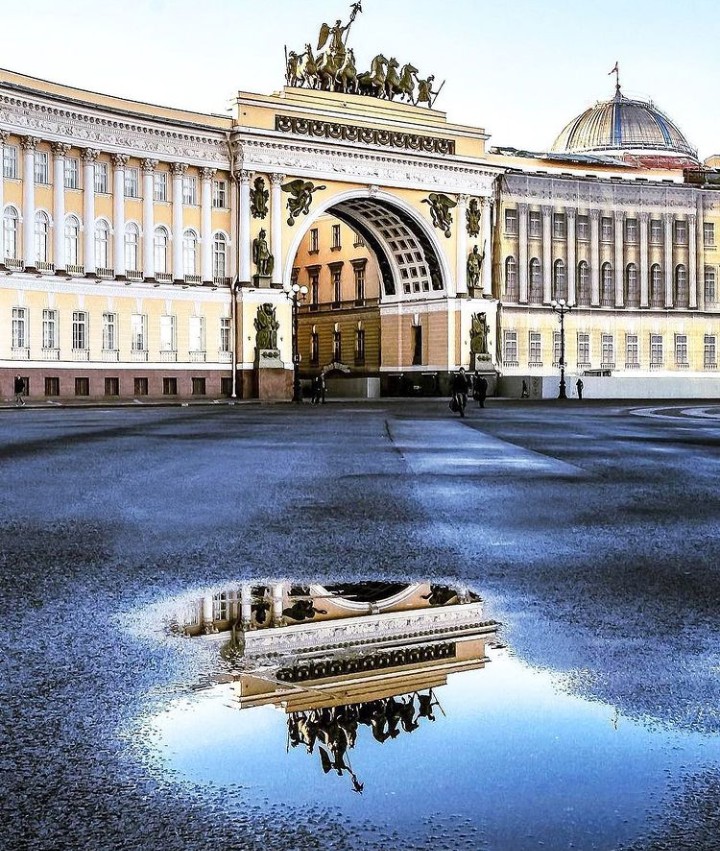
Palace Square (Source: Google Maps)
Palace Square, the grand heart of Saint Petersburg, is framed by the Winter Palace and the General Staff Building. This iconic square has witnessed significant events in Russian history, including the 1917 Revolution. The Alexander Column, a towering monument in the center, commemorates the victory over Napoleon and serves as a symbol of the city’s resilience. The architecture of the surrounding buildings showcases the opulence of the Russian Empire, making it a must-visit site for history and architecture enthusiasts.
Admiralty Building
A short walk from the Hermitage, the Admiralty Building is an iconic symbol of Russian naval history with its distinctive golden spire.
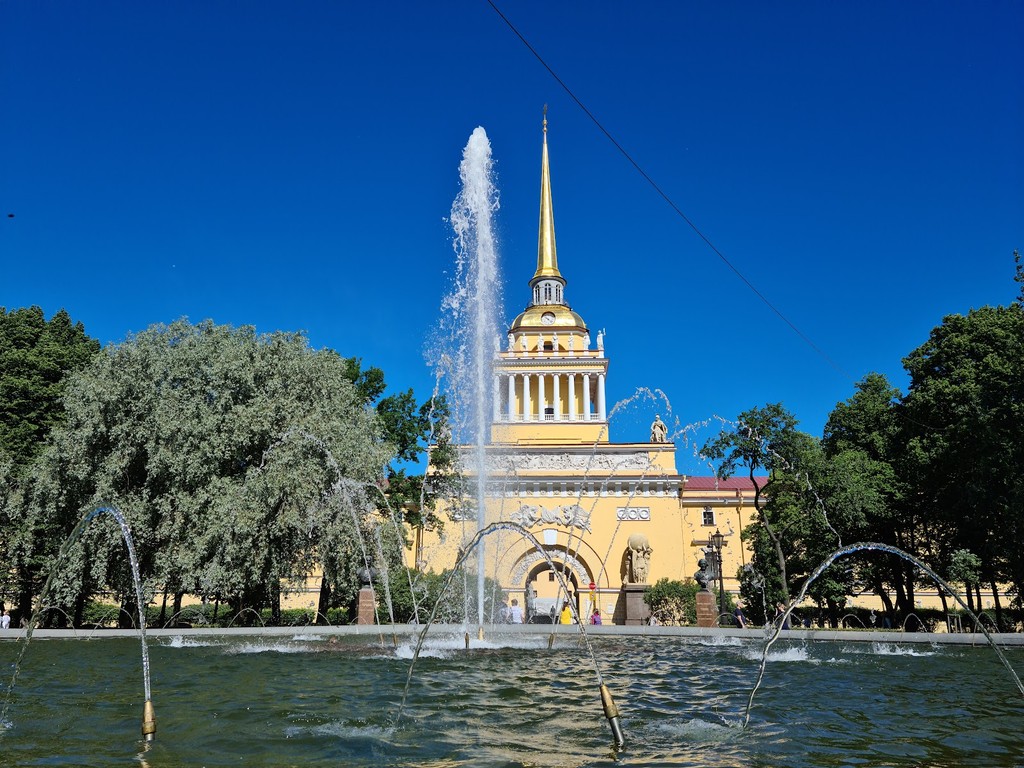
Admiralty Building (Source: Google Maps)
The Admiralty Building, a stunning architectural masterpiece, has long been a symbol of Russia's naval prowess. Built in the early 18th century, it features a distinctive golden spire that reaches 72 meters high, making it one of the tallest structures in the city. Initially constructed as a shipbuilding facility for Peter the Great, it has since served various administrative functions. The building's neoclassical design and its prominent location near the Neva River highlight its historical significance as a center of naval operations. Today, it stands as a testament to Saint Petersburg's maritime heritage.
Bronze Horseman
Just a brief walk from St. Isaac's, the Bronze Horseman is an iconic statue of Peter the Great, symbolizing the city's founder and its maritime ambitions.
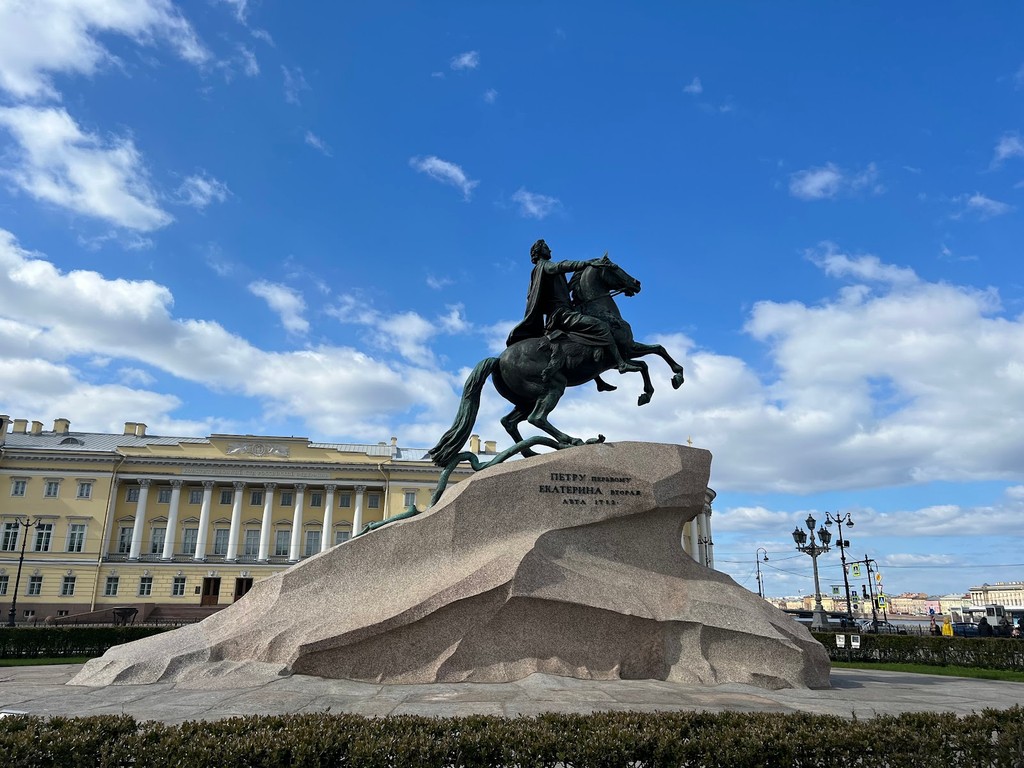
Bronze Horseman (Source: Google Maps)
The Bronze Horseman, a monumental statue of Peter the Great, is one of the most famous landmarks in Saint Petersburg. Erected in 1782, it was commissioned by Catherine the Great to honor the city's founder and his vision for a modern Russia. The statue is sculpted from bronze and stands on a massive granite pedestal, symbolizing Peter’s strength and determination. The surrounding area offers picturesque views of the Neva River, and the monument is often regarded as a symbol of the city itself, reflecting its rich history and cultural significance.
St. Isaac's Cathedral
Continue to St. Isaac's Cathedral, one of the largest cathedrals in the world, known for its magnificent dome and panoramic views of the city.
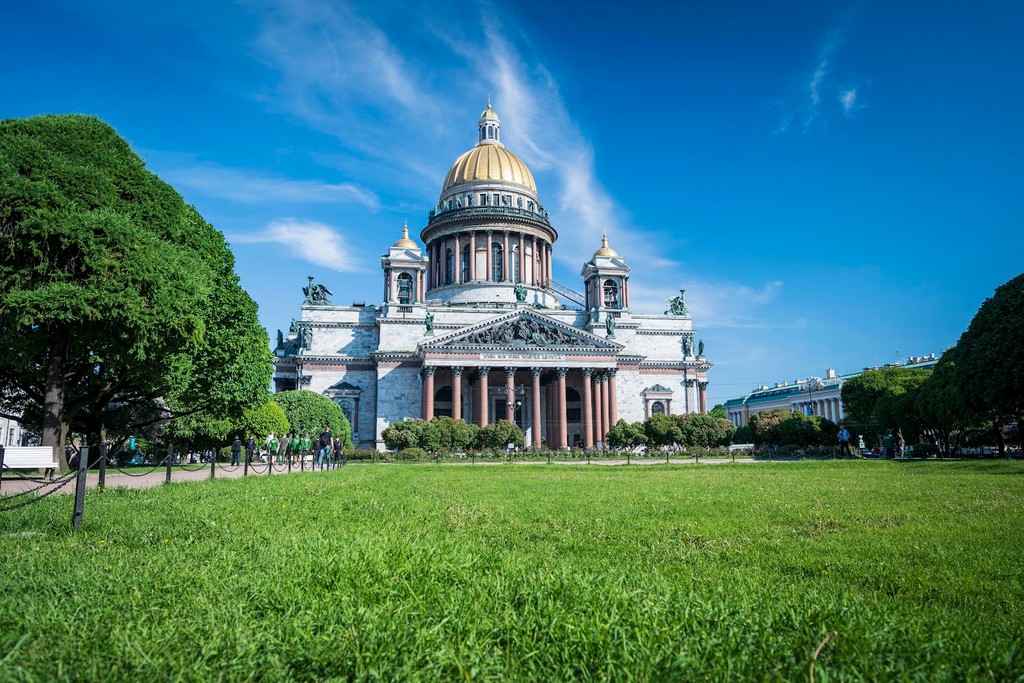
St. Isaac's Cathedral (Source: Google Maps)
St. Isaac's Cathedral, one of the largest cathedrals in the world, is renowned for its magnificent golden dome that dominates the Saint Petersburg skyline. Completed in 1858, this architectural marvel features a stunning interior adorned with intricate mosaics, marble columns, and elaborate frescoes. The cathedral was originally built as a tribute to Saint Isaac of Dalmatia, the patron saint of Peter the Great. Visitors can climb to the colonnade for panoramic views of the city, making it a popular attraction for both tourists and locals alike.
State Hermitage Museum
Just adjacent to Palace Square, the State Hermitage Museum is one of the largest and oldest museums in the world, showcasing a vast collection of art and cultural artifacts.
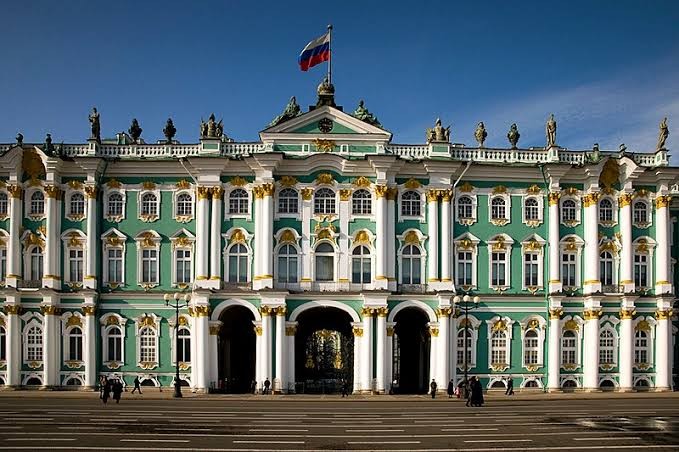
State Hermitage Museum (Source: Google Maps)
The State Hermitage Museum is among the largest and oldest museums in the world, housing a vast collection of art and cultural artifacts. Founded in 1764 by Catherine the Great, the museum is located in the Winter Palace, an architectural masterpiece itself. The collection includes over three million items, ranging from ancient artifacts to modern art, with masterpieces by renowned artists such as Rembrandt, Leonardo da Vinci, and Michelangelo. The museum not only showcases the richness of Russian history but also serves as a cultural hub, hosting various exhibitions and events throughout the year.
Church of the Savior on Spilled Blood
A short walk from the Summer Garden, this iconic church is renowned for its vibrant, colorful domes and intricate mosaics, marking the site of Emperor Alexander II's assassination.
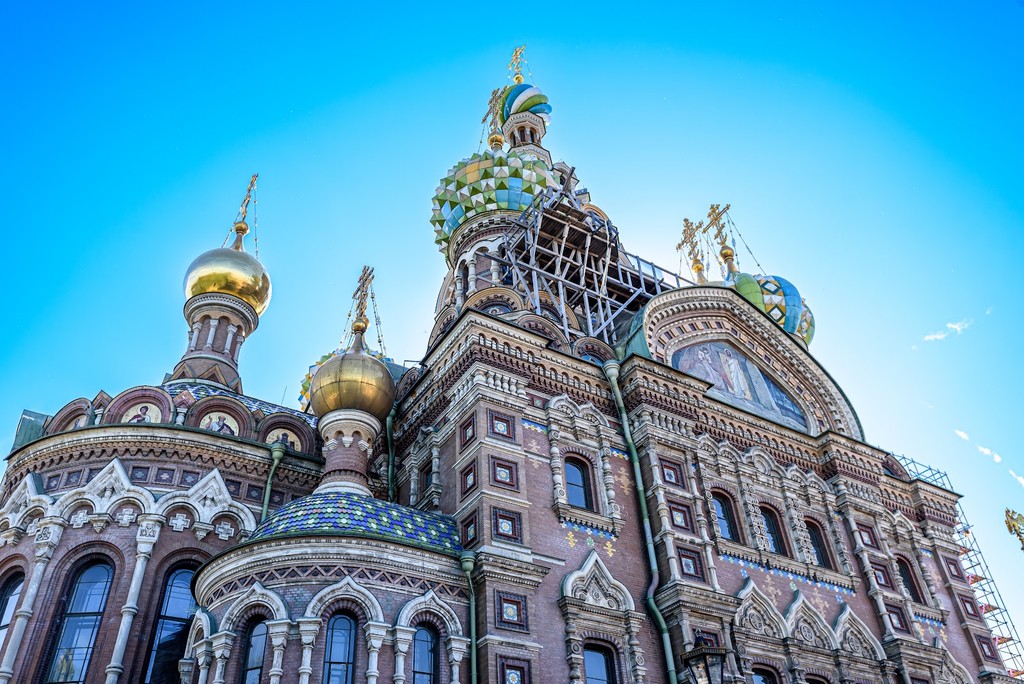
Church of the Savior on Spilled Blood (Source: Google Maps)
The Church of the Savior on Spilled Blood, known for its vibrant and colorful domes, is a stunning example of Russian architecture. Built on the site of Emperor Alexander II's assassination in 1881, the church features intricate mosaics that depict biblical scenes and saints. Its design is influenced by traditional Russian styles, with onion-shaped domes and ornate decorations. The church serves as a memorial to the emperor and is a significant cultural landmark in Saint Petersburg, attracting visitors with its beauty and historical importance.
Summer Garden
Head towards the Summer Garden, a beautiful and serene park established by Peter the Great, featuring sculptures and meticulously designed landscapes.
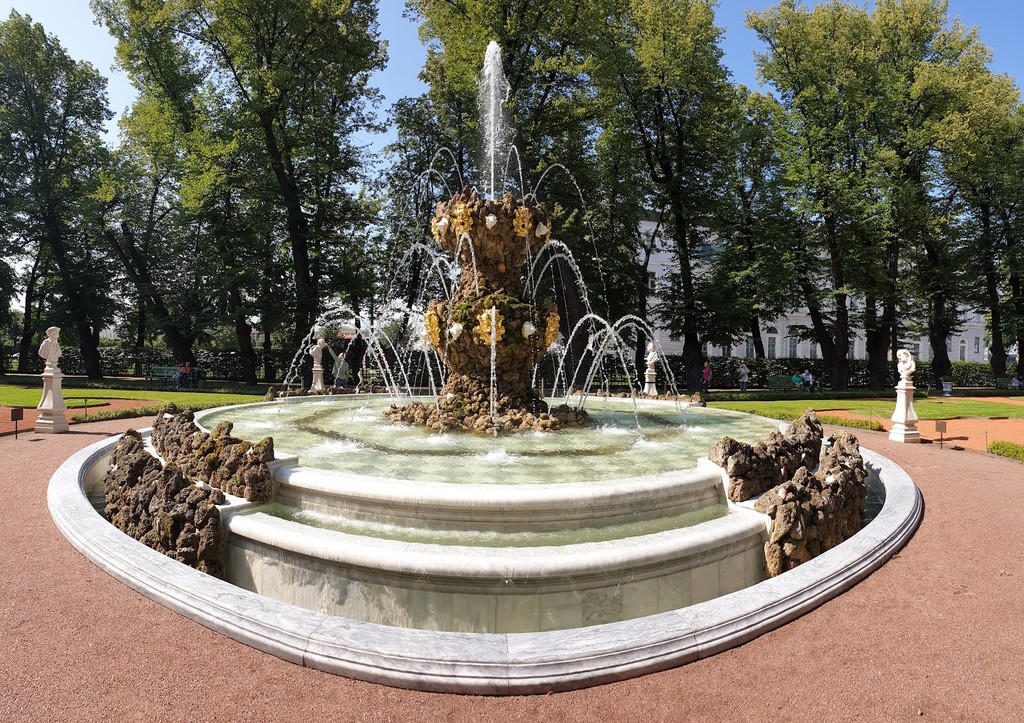
Summer Garden (Source: Google Maps)
The Summer Garden, established by Peter the Great in the early 18th century, is a beautifully landscaped park featuring a variety of sculptures, fountains, and meticulously designed flowerbeds. This serene oasis in the heart of Saint Petersburg was inspired by European gardens and serves as a reflection of Peter's vision for a cultured society. The park's picturesque pathways invite leisurely strolls, and its historical significance is underscored by the presence of numerous monuments and pavilions that date back to the time of the Russian Empire.
Peter and Paul Fortress
Cross the Neva River to reach the Peter and Paul Fortress, the original citadel of Saint Petersburg, and explore its historical significance and the resting place of Russian tsars.
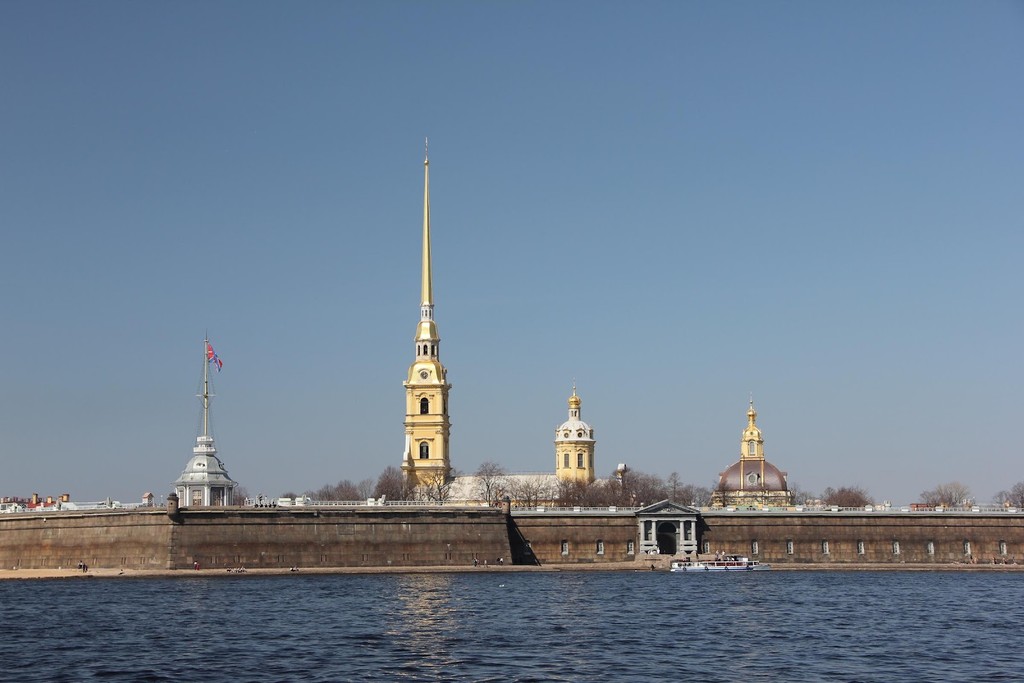
Peter and Paul Fortress (Source: Google Maps)
The Peter and Paul Fortress, the original citadel of Saint Petersburg, holds a significant place in Russian history. Founded by Peter the Great in 1703, it was designed to protect the city from potential invasions. The fortress is home to the Peter and Paul Cathedral, where many Russian tsars are buried, adding to its historical importance. The fortress's architecture features a blend of military and religious styles, and its location on Zayachy Island offers stunning views of the Neva River. Today, the fortress stands as a symbol of the city's origins and a popular tourist destination.
Field of Mars
Conclude your tour at the Field of Mars, a vast open space that has served various purposes throughout history, offering a peaceful end to your exploration of Saint Petersburg's rich cultural tapestry.
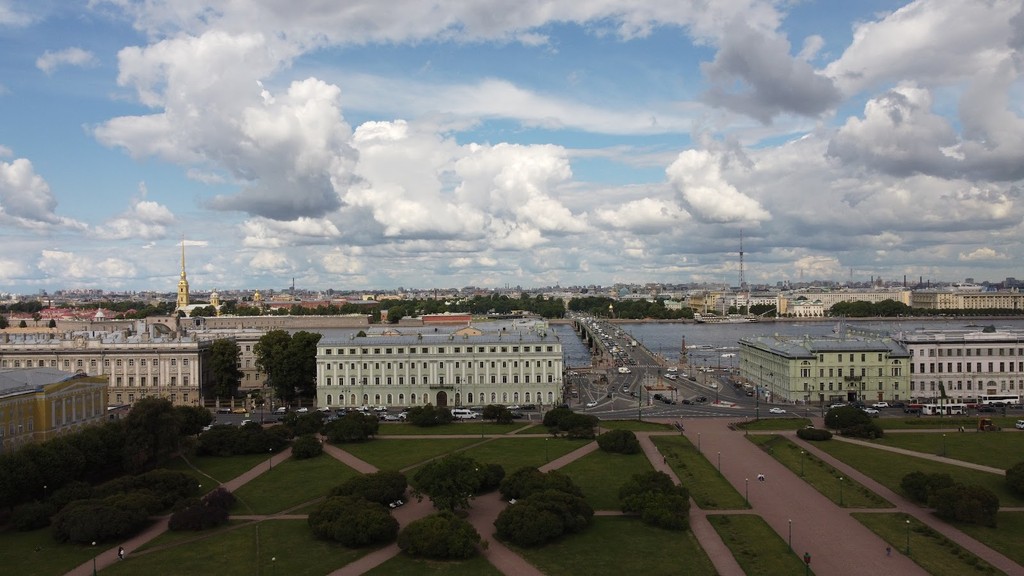
Field of Mars (Source: Google Maps)
The Field of Mars is a vast open space that has served various purposes throughout its history, from military parades to public gatherings. Named after the Roman god of war, it is a significant historical site in Saint Petersburg. The park is adorned with monuments and memorials, including the Eternal Flame, honoring those who fought in the Great Patriotic War. Its tranquil atmosphere provides a peaceful end to the exploration of the city's rich cultural tapestry, making it a fitting conclusion to the tour.

Your travels, your rules.
Create your own Free Walking Tours.
Set your preferences, distances and anything you want to do or see.
Completely free, no payment required.